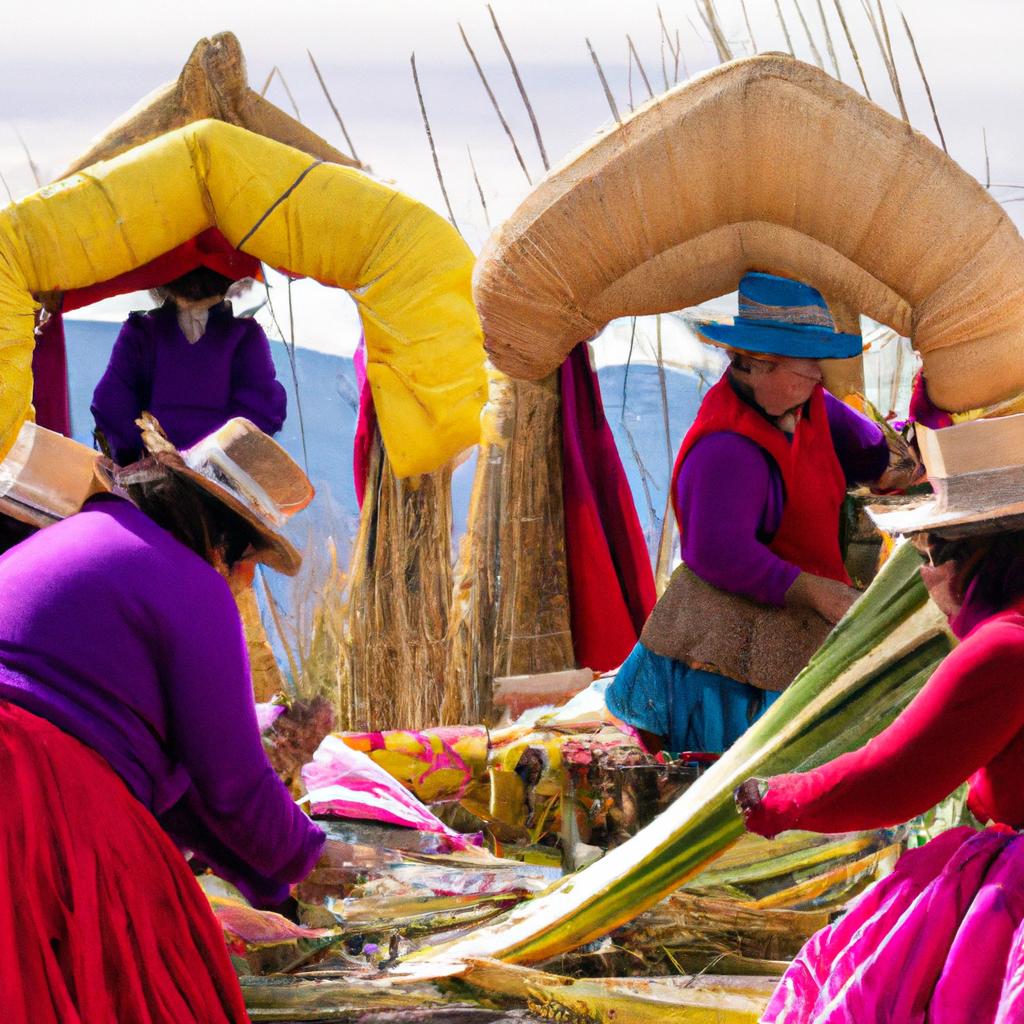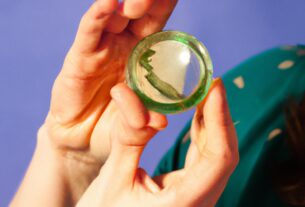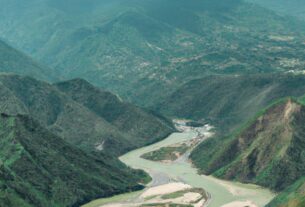Lake Titicaca, an awe-inspiring freshwater lake located in the Andes Mountains, is home to the enchanting Uros people. Renowned for their remarkable floating islands crafted from the lake’s reeds, the Uros people embody a unique way of life. In this article, we will delve into the rich history, vibrant traditions, and cultural significance of the Uros people and their extraordinary existence in the region.
Lake Titicaca: An Overview
Lake Titicaca, nestled between Bolivia and Peru, stands as one of the largest and most beautiful freshwater lakes in South America. With its crystal clear waters and breathtaking surrounding mountains, it mesmerizes anyone who lays eyes on it. Considered the highest navigable lake globally, Lake Titicaca boasts a diverse ecosystem teeming with fish and birds. It also holds immense spiritual importance in Incan mythology, maintaining its status as a sacred site.
The Uros People: A Brief History
Believed to be descendants of the ancient Aymara people, the Uros have inhabited Lake Titicaca for centuries. To safeguard their independence and protect themselves from rival tribes, they ingeniously constructed floating islands out of the lake’s reeds. These islands not only served as a fortress but also enabled the Uros people to adapt to the fluctuating water levels of the lake.
The Significance of Uros Culture in the Region
The Uros people possess a rich and remarkable culture that greatly contributes to the region. Their handicrafts, including textiles and reed boats, are renowned for their exquisite beauty and unrivaled quality. Through their unique way of life, the Uros people exemplify resilience and adaptability. Moreover, they play a vital role in the local economy, with ecotourism on the floating islands providing a livelihood for numerous families.
Stay tuned for the next section, where we will embark on an exploration of the captivating floating islands of the Uros people.
The Uros Islands
The Uros people have gained worldwide fame for their incredible floating islands, entirely constructed from the reeds found within Lake Titicaca. These islands serve as a testament to the Uros people’s resourcefulness and ingenuity. In this section, we will delve into the various aspects of the Uros Islands.
Description of the Floating Islands
The floating islands consist of layers upon layers of reeds meticulously stacked together. These reeds are firmly anchored to the lake bed using ropes and poles, while the top layer is covered with a layer of soil. Not only are these islands buoyant, but they can also be moved across the lake when necessary.
Each floating island accommodates multiple families, providing communal areas for activities like cooking and socializing. Additionally, individual living spaces are allocated to each family, ensuring a shared yet private way of life.
Construction of the Islands
For centuries, the Uros people have passed down the art of crafting floating islands from one generation to the next. The process begins by collecting reeds from the lake, subsequently tying them together to form large bundles. These bundles are then anchored to the lake bed, with layers of reeds gradually added to achieve the desired island size.
The Uros people also utilize these reeds to construct their boats, which they rely on for fishing and transportation. The boats follow a similar construction process to the islands, with reeds bound together to form the boat’s structure.
Unique Features of the Islands
The floating islands boast several intriguing characteristics that set them apart. One such feature is their natural insulation, rendering them warm during winter and cool during summer. The Uros people also utilize the reeds to build their houses, ensuring comfortable and insulated living spaces.
Another distinct feature lies in the islands’ anchorage to the lake bed. Through ropes and poles, the Uros people anchor the islands and adjust rope tension to move them across the lake as needed.
Stay tuned for the next section, where we will immerse ourselves in the vibrant culture and traditions of the Uros people.
Uros Culture and Traditions
The Uros people possess a vibrant and ancient culture that has thrived through generations. Let us now explore some of the captivating traditions and practices that still resonate with them today.
Daily Life on the Islands
Life on the Uros people’s floating islands is truly one-of-a-kind. Since the islands are entirely composed of reeds growing in the lake, the Uros people have adapted their way of life to this unique environment. From building homes to cooking meals, reeds serve multiple purposes. They even craft boats from reeds for fishing and transportation.
A typical day on the islands encompasses fishing, weaving, and tending to livestock such as sheep and alpacas. Families collaborate to maintain their homes and islands, fostering a strong sense of community among the Uros people.
Traditional Clothing and Handicrafts
The Uros people are renowned for their exquisite textiles and handicrafts, meticulously created using traditional techniques passed down through generations. Women adorn themselves with brightly colored skirts and shawls intricately embroidered with mesmerizing designs. Meanwhile, men don ponchos and hats crafted from reeds.
Uros handicrafts range from reed boats to woven baskets and hats. Each item reflects meticulous attention to detail and craftsmanship, garnering admiration from both locals and tourists.
Religious Beliefs and Practices
Deeply connected to Lake Titicaca and the surrounding mountains, the Uros people harbor profound spiritual beliefs. They view the lake as a dwelling place for powerful spirits capable of bestowing good fortune and prosperity upon those who reside on its shores.
Throughout the year, the Uros people partake in various religious festivals, with the Fiesta de la Virgen de la Candelaria standing as one of the largest and most vibrant celebrations in the region. During this festival, the Uros people don traditional attire and engage in music and dance to honor their ancestors and celebrate their culture.
Stay tuned for the next section, where we will explore ecotourism on the Uros Islands and the positive impact it has on the local community.
Ecotourism on the Uros Islands
In adapting to a changing world, the Uros people have embraced tourism, inviting visitors into their homes to experience their unique way of life. Ecotourism on the floating islands offers a sustainable means of supporting the Uros people and their culture while providing an unforgettable experience for tourists.
Sustainable Tourism Practices
To preserve their delicate ecosystem and way of life, the Uros people have implemented sustainable tourism practices. These practices include limiting the number of visitors to the islands and mandating the removal of all waste. Additionally, the Uros people employ solar panels for electricity generation and collect rainwater for their daily needs. These endeavors ensure that tourism on the islands remains sustainable, leaving no detrimental impact on the environment.
Activities for Visitors
Visitors to the Uros Islands have the opportunity to immerse themselves in a truly unique way of life. They can explore the floating islands, take rides on traditional reed boats, learn about Uros handicrafts, and even spend the night on one of the islands. Moreover, they can revel in the stunning views of the lake and the surrounding mountains.
Supporting Local Communities
By purchasing handicrafts and utilizing the services of local guides, visitors actively contribute to supporting the Uros people and their way of life. Supporting local communities not only helps preserve the Uros culture but also allows visitors to have an authentic experience, gaining deeper insights into the Uros people and their traditions.
In the next section, we will delve into the challenges that the Uros people face and the efforts being made to preserve their culture and way of life.
Challenges Facing the Uros People
The Uros people confront numerous challenges that threaten their way of life and cultural heritage. In this section, we will explore these challenges and the measures being taken to address them.
Environmental Threats to the Islands
The Uros people heavily rely on the reeds growing in the lake to construct and maintain their floating islands. Unfortunately, climate change and pollution have severely impacted the lake’s ecosystem, endangering both the reeds and the Uros way of life. Increased water pollution resulting from tourism and agricultural activities has further depleted fish populations and compromised the overall health of the lake. While efforts are underway to reduce pollution and protect the lake’s ecosystem, greater initiatives are necessary to ensure the long-term sustainability of the Uros way of life.
Economic Challenges in the Region
The Uros people face economic hardships, including poverty and limited employment opportunities, which often hinder their ability to uphold their traditional way of life. Many Uros individuals have turned to ecotourism on their floating islands as a means of income. However, this transition can present its own challenges, as some Uros people may need to adapt their handicrafts and traditions to suit tourist preferences, potentially compromising their cultural authenticity.
Preserving Uros Culture and Way of Life
Despite the challenges at hand, numerous efforts are underway to safeguard the Uros culture and way of life. Local organizations and governments are actively working to mitigate pollution in the lake, aiming to protect the Uros way of life. Simultaneously, endeavors are being made to provide sustainable economic opportunities that preserve the Uros people’s cultural authenticity.
Stay tuned for the final section, where we will recap the significance of Uros culture and encourage support for sustainable tourism.
Conclusion
In conclusion, the Uros people and their culture serve as an essential and captivating part of the region surrounding Lake Titicaca. Their floating islands stand as impressive engineering marvels, reflecting their ability to adapt to the ever-changing environmental conditions. The Uros people’s handicrafts, traditions, and unique way of life significantly contribute to the local economy while enriching the region’s cultural heritage.
As we have witnessed, participating in ecotourism on the Uros Islands provides an extraordinary opportunity to support the local community and immerse oneself in the remarkable Uros culture. By embracing sustainable tourism practices, we actively protect the environment and ensure the preservation of the Uros way of life.
In conclusion, TooLacks invites you to embark on a journey to the Uros Islands and delve into the captivating culture of the Uros people. By supporting sustainable tourism, we ensure that future generations can revel in the beauty and wonder of Lake Titicaca and the resilient Uros people.
Sources:
- National Geographic
- Peru Hop
- UNESCO


